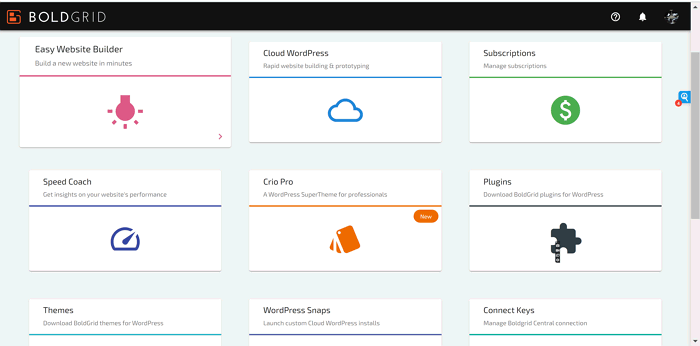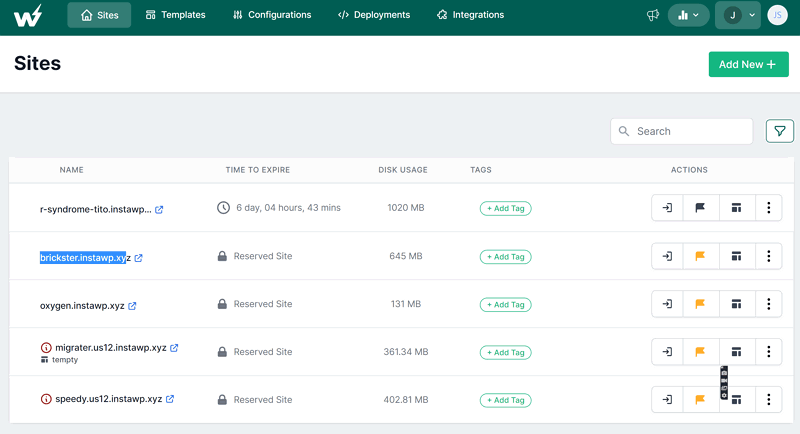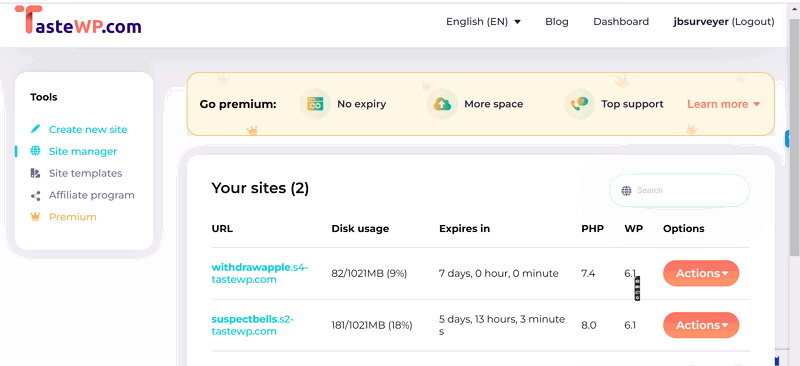The first question to answer is why duplicate a WordPress website? For someone who has created dozens of XAMPP & Laragon temporary WP websites the need for creating a temporary WordPress website seems obvious:
1 – Testbed to try out a new theme or plugins in a secure & web realistic environ ;
2 – An open sample learning site that clients can logon on to and run directly live tutorials. Works better with Buddy Press or WPMU-WordPress Multiuser ;
3 – Migration or staging server for doing isolated and thus safe design/debugging tasks before restoring back to the main server;
4 – Demo website that clients can visit, directly run GTMetrix or GooglePageSpeed tests on. This is a vital element of Zoom tutorial sessions.
In contrast, localhost for a temporary WordPress website is mising 2 critical features. First, public access via the Web, so that clients can directly visit the site and have controlled access to its features. Second, many website testing and integration programs require a public URL/links plus Web Rest, Graphql, or RPC services not accessible on localhost WordPress websites.
These requirements disqualify many popular locahost-based systems like Flywheel, XAMPP, Laragon, etc. Yes, these localhosts do serve a purpose by allowing direct PHP, JavaScript, CSS,, SQL and other code engine testing of WordPress sites. This is attractive when tuning the coding innards more directly than what is available on the Web. But often without direct links to the Web and Web Services can constrains the overall effectivenes of localhost testing
So lets create a laundry list of good Duplicate WordPress website features:
0 – Allows quick creation of a duplicate website in 20-30 seconds or faster;
1 – A public Web URL accessible by any remote user;
2 – The auto-created URLcontains some user customizing – brickster.instawp.xyz
3 – Creates a new website with minimal settings required;
4 – Has a templates system to define themes and plugins to be used in duplicate website WP site creation;
5 – it takes 20-30 seconds to create a duplicate website; and then logon with a dashboard button click;
6 – The “temporary” WordPress website can be made permanent;
7 – There is a dashboard for access to all duplicate websites and their settings on a dashboard
8 – there is good guide/tutorials on how to use the duplicates.
Examples of Duplicate WordPress Creation Tools
The following is our analysis of the 3 best duplicate WordPress website creation apps; but we are open to tips on other systems that meet the above feature needs:

* BoldGrid has a dashboard with one-click signon to website;
* The URL is public but does not allow user customization;
* Minimal settings are needed for a duplicate site but user defined templates are available;
* it takes 15-20 second to create a new BoldGrid site;
* The website is permanent but can be easily deleted in the dashboard;
* Boldgrid supports BuddyPress but not WPMU;
* The onboard guide is okay – a bit scattered;
* Boldgrid has a ton of freemium backend pluginsfor use on the duplicate website.

* Instawp has a dashboard with one-click signon to website;
* The URL is public and does allow user customization;
* Minimal settings are needed for a new site but user defined templates can be used to add specific themes & plugins;
* it takes 3-5 seconds to create a new InstaWp site while access to pages averge 2-4 seconds;
* The website can be made permanent or temporay based based on user settings in the dashboard;
* InstaWP supports BuddyPress but not WPMU;
* The onboard guide is good with extensive tutorials;
* InstaWP has the start of integrations with GitHub, MailChimp and other apps;
* Staging with WPVivid and UpdraftPlus Pro worked.

* TasteWP has a dashboard with one-click signon to the duplicate website;
* The URL is public but does not allow user customization;
* Minimal setting needed for a new site with short popup of sattings;
* It takes 3-5 second to create a new TasteWP website and about the same time to load pages at runtime with tuning;
* The website lasts for 7days but can be deleted earlier in the dashboard;
* TasteWP supports BuddyPress but not WPMU;
* The onboard guide is okay; better is 3rdparty review;
* Like Boldgrid TasteWP has 4 freemium backend plugins;
* Staging with WPVivid worked.
TasteWP is free for the 7day temporay website and has a premium plan but many features are “to be delivered”. Significantly, WPVivid staging worked in TasteWP In contrast , both BoldGrid and InstaWP have well defined premium plans.
BoldGrid has a $60/year plan that supports creating up to 12 permnent websites plus provides an unlock key to premium Total Upkeep backup & migration and its SEO plugins. In addition free copies of its PageBuilder and Speed Advisory Guide are included in the premium package. But as seen here Boldgrid has .experienced serious downtime problem earlier this year. Current testing finds BoldGrid trelatively safe.
InstaWP for $90/year delivers 10 sites which must be less than 5GB in total size. InstaWP has developer tools like Code Editor, Database Editor, Log Viewer, Git Integration, SSH access with WP-CLI. So InstaWP can provide locahost like special coding and integration.
Summary
The ever lower costs of Cloud Servers is impacting every aspect of development, Hosting continues to deliver cost and feature enhancements. Duplicate WordPress websites are another example. CDN-Content Delivery Networks are literally caching in on system integration and tuning. And it shows in daya to day workflows – XAMPPand Laragon now get raely used except for special coding logic problems. Now preentations to clientsuse a duplicate server saving investment in permanent ardware until the system is reliablyscoped out.
Dupliate WordPress websites are just another tool like Duplicate Page and Post plugins which accelerate tough design and styling fixes to a page or post. Duplicate websites just extend that web development convenience to complete WordPress websites.